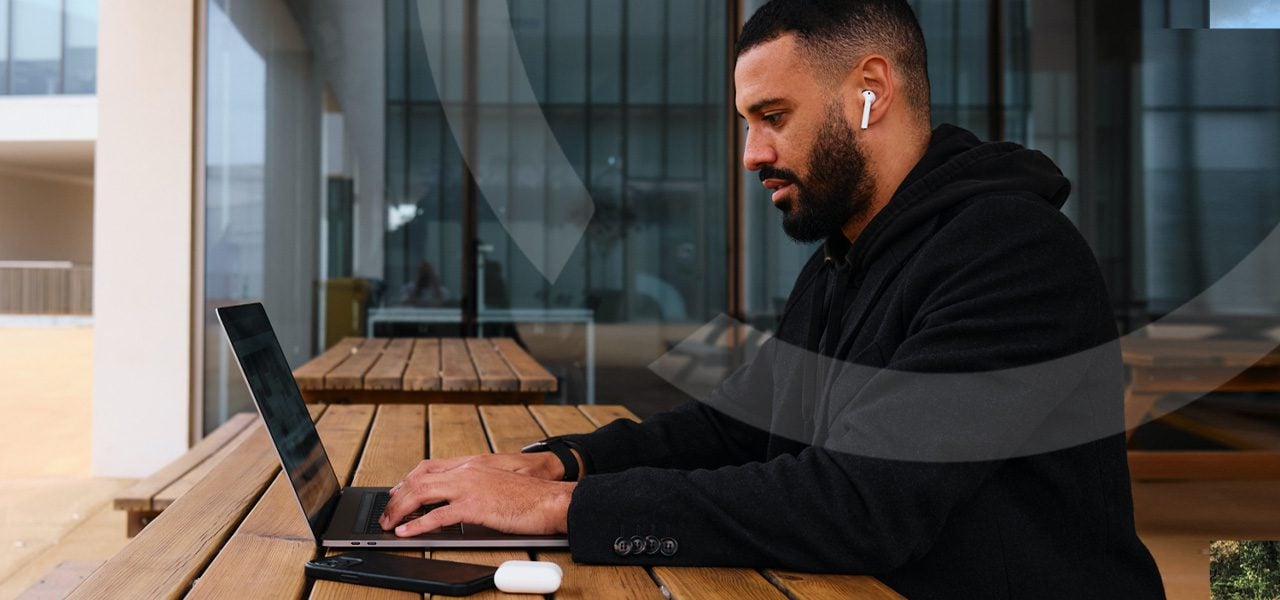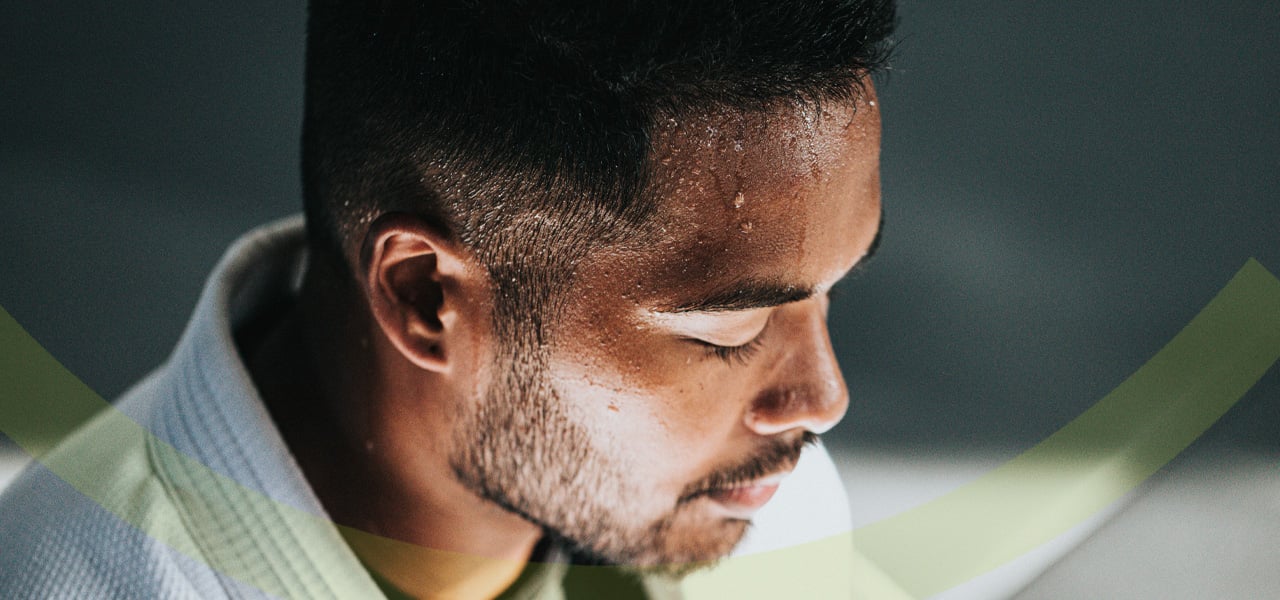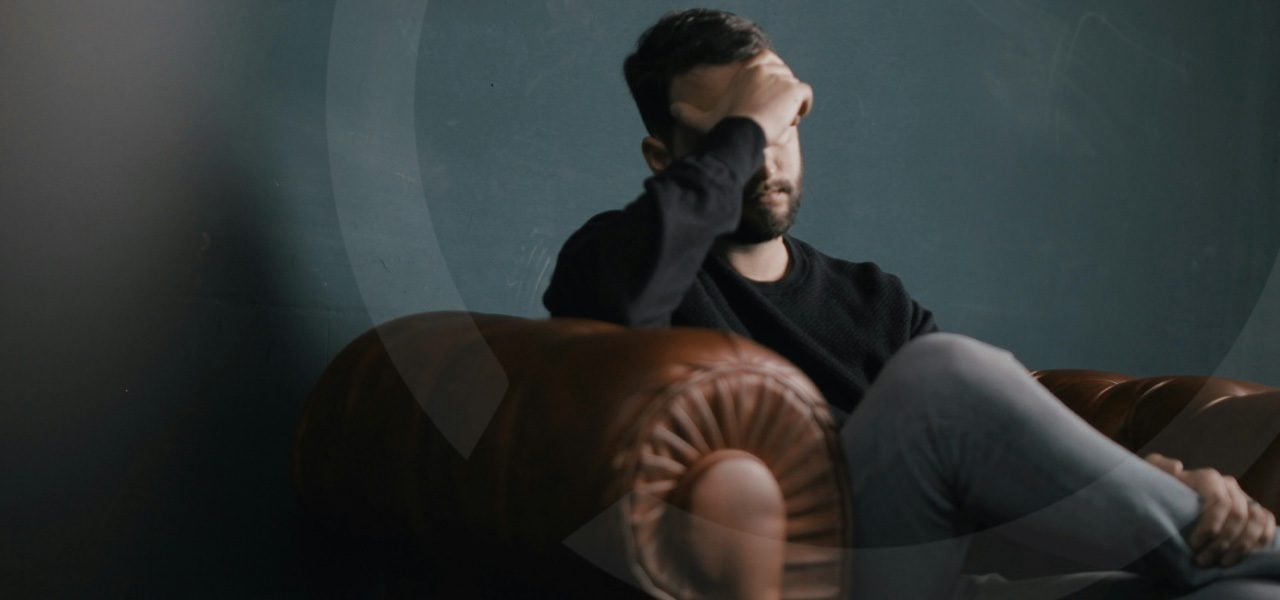For father, husband, and business owner Dylan, virtual treatment was the perfect option for addiction recovery.
By Jeff Vircoe
With a comfy pillow tucked behind his head, Dylan is smiling at the camera, sharing about the gratitude in his life today. His wife is happy. His two children are great. All is well at the business he owns. Even the dog is digging the new Dylan. For this 47-year-old Vancouver man, a whole lot has changed in the last year. Recovery will do that.
“My health got so bad that even walking to work in the morning I would have to stop and throw up a couple of times,” Dylan admits. “Not because I was hungover, but because I didn’t have anything in the system. My skin is blotchy, eyes are bleary. I am on the path to liver failure without a doubt here.”
Addiction will do that.
Dylan’s story is not the rough-upbringing, drugs-and-alcohol-abuse-in-his-teens, run-ins-with-the-law take on addiction we often hear. Far from it.

An Upbringing Filled with Promise
Raised in Ontario, he came from a healthy, happy middle-class family of two parents, two kids and a whole lot of fun growing up. Sports, video games, good grades in school. Barely any drugs or alcohol until well into his 30s. No sign of what was to come.
“I have the most bland, vanilla, normal typical Canadian story ever. Parents didn’t drink, I never had any abuse, never had any real childhood issues that I could blame on anything. I had nothing that pushed me in any kind of addictive direction. Except for really, really, liking it.”
Yet, by the time he entered a virtual Intensive Outpatient Program (IOP) offered by EHN Online in the spring of 2023, he had “liked” alcohol to the point of at least a 26-ounce bottle of vodka every day for almost two years, augmented by wine when he ran out – and he didn’t even “like” wine.
Such is the nature of Substance Use Disorder. Cunning. Baffling. Powerful.
The Signs of Trouble Were Not There
In 2022, a Centre for Addiction and Mental Health (CAMH) study showed that many more Canadians die annually due to complications with alcohol (15,000) than by opioid-related reasons year after year – and it is not even close.
Alcohol is still very much a problem with Canadians. Quitting is not easy, and people like Dylan – gainfully employed, a dad, no previous trauma or encounters with the criminal justice system – make up most people showing up for treatment programs like the ones offered by EHN Canada. The stigma surrounding addiction says the down and outers, the unhoused, the ones living on the fringes, are the ones who typically need the help. That doesn’t tell the full truth.
Dylan owns a company in the tech/media industry in Vancouver. He says he had no issues with alcohol or other drugs through his teens and twenties, and most of the way through his 30s. His wife is mostly a non-drinker.
“It just wasn’t part of my life,” he explains. “Even going out with friends, two or three drinks if out for a night, then go home and that was it.”
For no reason he can put his finger on, by his late 30s, he began to ramp up his drinking. And when the switch flipped, the floodlights were bright and dangerous.

Frequency Changes and the Problems Begin
“We have clients dropping off booze all the time as a thank you. At some point, it is like 11 a.m. and there is a big bottle of vodka here, and I was like why not? Call it a lunch drink. Sure. And I think that was the start of a slippery slope because there was no reason not to. I started getting hammered frequently and I liked it.”
“The past five years, it got pretty close to every day. That tripped to at least every night for sure after work and then that became every day during the day.”
It became first thing in the morning. A mickey, then two mickeys, then 26-ouncers, topped off with wine. By the end, all day every day.
Until the last few years, Dylan described himself “definitely super high functioning.”
“I never got sloppy, I’m not a puker, no hangovers. I was your happy, buzzed, drunk buddy who is always in a good mood, never yelling, screaming, passing out, going crazy. I was like the guy who hit a very happy plateau and worked hard to maintain that.”
But as the disease progressed and his consumption and frequency increased his weight went from 185 to 250 pounds. His relationships were strained, his stress levels through the roof, his liver numbers shaky.
EHN Online Provides the Right Fit
The moment of clarity happened some point last fall, and as he says it was “spectacularly shitty.”
“There was definitely a tipping point where I went from happy, high functioning drunk buddy who you want to hang out with to all my plans now revolve around I don’t want to do anything except for drink. Not only that, I am so chemically addicted that that first thing in the morning I am going to be sick, not because I am hung over, but because I am in withdrawal.”
He gives his wife full props for doing the research and getting Dylan some options. The Intensive Outpatient Programs offered by EHN Online are designed to offer help to people who, for work or family reasons, simply cannot attend an inpatient facility for the weeks or months it can take to stabilize people struggling with Substance Use Disorders.
Virtual IOPs are evidence-based practices that offer clients the chance to learn the tools they need to heal from mental health issues including addictions.
Dylan attended a curriculum of two-hour sessions, four days a week for two months. Those sessions typically included up to 10 clients at a time in group setting, with a clinician leading the way.
Over the eight weeks of his IOP, clinicians walked Dylan and his group members through information on the underlying causes of addiction, the psychoeducational aspects of addiction and recovery, including the biology and physiology elements. In one-on-one and group therapy environments, the therapists provide a wide range of solutions and tools for maintaining recovery and avoiding relapse via Cognitive Behavioral Therapy (CBT) and Dialectical Behavior Therapy (DBT).
Continuum of Care Means Perserverance
When he completed his four sessions per week, Dylan signed up for another 10 months of Aftercare groups. Once a week he spends about two hours in a group therapy session with others who are learning to apply the tools and techniques they were introduced to in EHN in-patient and out-patient programs.
In the 10 years prior to his connection with EHN Canada, he had done individual counseling, hypno-therapy and relationship counseling to no avail.
“I tried those, lots of assorted reading stuff online and trying different things, none of which worked for me in any fashion for more than about 24 hours. This is the first time I have made it this far,” he says.
On His Road to Lasting Recovery
Six months into his recovery and fully abstinent thanks to both his IOP and Aftercare, Dylan has become a big fan of his aftercare group therapy.
“The thing that really was the game changer was knowing that I wasn’t the only person in the whole world with this problem. That was a major revelation. Because up until that point, everything I had ever done had been kind of alone and not with people who had been through it.”
As the summer of 2023 comes to an end, Dylan knows there is still work to be done. He knows enough about others who have relapsed to accept that there is no guarantee of abstinence. He is living one day at a time, loving his new life and is not willing to take a shot at seeing if he can drink moderately.
“I have failed at moderation enough times that I have finally convinced myself that I am not a moderation person. I am the slippery slope, and not only am I on the slippery slope, I am on the cliff of the slippery slope. It is off the cliff or on the cliff. And I am going to stay on the cliff,” he says with a shrug of his shoulders.
Want to Talk to Us About Treatment Options?
Please contact us at 1-866-963-6343 if you or a loved one is struggling with an addiction or mental health disorder.



